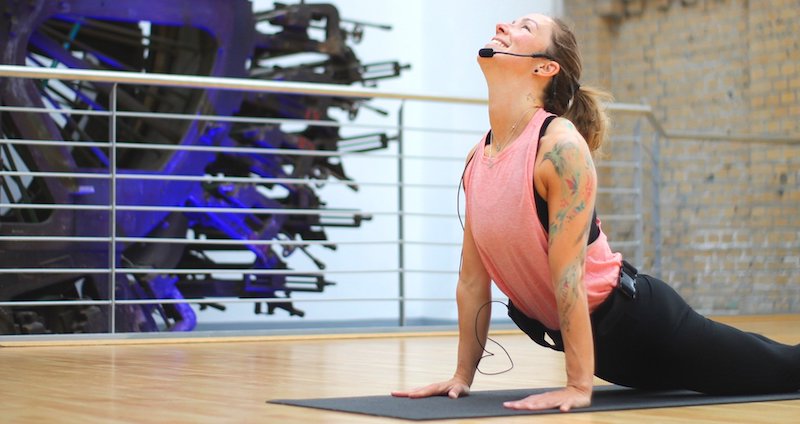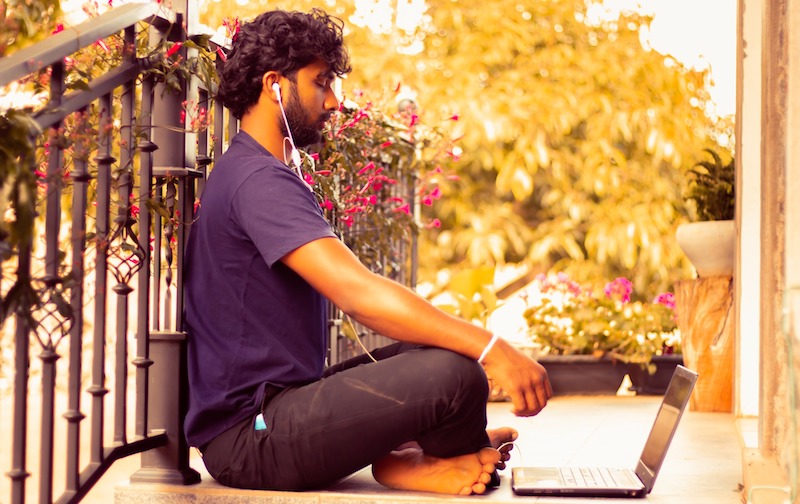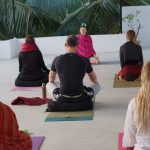In mid-March of this year, when Ontario shut down non-essential businesses because of COVID-19, I stopped teaching my mindfulness yoga classes in person and switched to online classes. I was not alone.
Many yoga teachers and studios around the world started offering a wide range of yoga classes online, as a way to protect the health of themselves and their students, while enabling students to continue to enjoy the benefits of yoga. Some yoga teachers even created podcasts, webinars, and other resources to help other teachers move their classes online.
Some teachers, though, have questioned whether online classes — with the technical issues and the physical disconnect from their students — can work as well as in-person classes.
I know my regular students would prefer to take my classes in person, but they’ve also told me that they’re thankful to be able to continue their weekly yoga practice with me even if it is online. Over the past few months, though, they have settled into the online format, with some of them setting up their smartphone outside so they can do my live yoga classes on their deck.
Several recent studies also show that online yoga classes or private sessions can be an effective way of sharing yoga with people wherever they are, whether it is for general physical and mental wellness, or for something like chronic pain.
In this way, yoga teachers and studios are joining the growing number of health providers who have embraced telehealth during the coronavirus pandemic, including doctors, physical therapists, and psychologists. Only in this case, instead of telehealth, it is called tele-yoga.
Online yoga classes for stress
In a study published earlier this month in the Asian Journal of Psychiatry, researchers from India tested a program of online yoga classes to see if it would work well and if people would accept it in lieu of in-person classes. The program was structured to help reduce people’s stress and enhance their wellbeing.
Researchers offered the tele-yoga sessions twice a day, five days a week for four weeks; people did not have to attend all classes. Ninety-five people participated. Researchers measured people’s perceived level of stress and their yoga performance, both at the start and end of the online yoga program.
After four weeks, 54 people had stuck with the yoga program, attending at least one class per week and a minimum of four times. On average, people attended about 11 times during the four-week program. Older people tended to show up more often for yoga.
Researchers found that students’ stress level decreased over the course of the program, with people who attended more classes seeing an even bigger drop. The top benefits of the online classes mentioned by people were mental relaxation and calmness, feeling energetic and less tired, feeling refreshed, and the ability to concentrate.
In addition, most people thought the online yoga classes were fairly easy. They also improved in their yoga performance, as rated by the yoga teacher, over the course of the program. This suggests “that participants were able to learn and perform these tele-yoga practices efficiently,” write the authors.
Online clinical yoga for chronic pain
Some tele-yoga studies occurred before the coronavirus that causes COVID-19 appeared on the scene. Some of these studies were focused on helping people with chronic pain and other health problems.
In one study, which was published in 2017 in the journal BMC Complementary and Alternative Medicine, researchers enrolled 64 U.S. veterans in a clinical yoga program offered through the Veterans Affairs Medical Center. About half attended in-person classes and roughly half took the online yoga classes.
The veterans yoga program offered 13 classes per week, with some offered as drop-in classes and the rest reserved for patients in certain clinical settings. Three of the drop-in classes were also offered as tele-yoga. Veterans could attend as many of the drop-in classes as they wished, with some students attending two to four times per week.
This mix of in-person and tele-yoga classes allowed researchers to compare the two formats. Students in both types of classes were very satisfied with the classes. In addition, about the same number of students in both groups reported that their symptoms improved after attending the classes, including symptoms such as back pain, trouble falling asleep, and energy level.
In addition, this study offered the online classes at outpatient community centers. This might provide students with a different experience than an at-home class. There were also doctors at the community center who could provide assistance during class if any of the students, some of whom were older, required it. The need for medical assistance during class adds another layer of complexity to offering online yoga, because teachers are not nearby to call for help.

Tele-yoga during COVID-19 lockdown
Another study, looked at the use of online yoga classes for people with chronic pain during the COVID-19 lockdown. This was published July 17 on the preprint server medRxiv. The paper has not been peer-reviewed, so the results should be viewed with some caution.
This study included 18 patients with chronic pain who were offered online yoga therapy sessions twice a week for six weeks. Everyone attended at least 10 of the 12 classes offered. Some people did the online classes using the videoconferencing app Zoom; others used the WhatsApp video chat.
After six weeks, people saw improvements in their pain level, as well as declines in their anxiety and depression. Most people had lower pain intensity by the fourth session, which the researchers say was the main motivation for them continuing to attend the online yoga classes.
One thing that the authors of the study noticed is that students had an easier time taking online yoga classes using Zoom, mainly because the connection and video quality were better. So when offering yoga classes online, the choice of technology is a key part of ensuring that students not only receive the instruction, but are satisfied enough to keep coming back.
Online yoga classes can work
While these studies show that it is feasible to offer online yoga classes, even for helping people with chronic pain or other health problems, the studies are small and have some limitations in the way they were designed.
For example, none of them were randomized controlled trials (RCTs), the “gold standard” for clinical trials. In this type of study, reseachers might randomly enroll one group of people to do online yoga and another group to do in-person classes, comparing the benefits of the two.
Overall, though, studies like this support the use of tele-yoga for general physical and mental health, as well as for conditions like chronic pain. Online yoga is useful not just during a pandemic, but at other times as well, especially for people who live in rural or other areas where in-person yoga classes are not available.








very interesting in a nutshell roundup shawn… ive been seeing all these studies…uve put things in perspective… online yoga therapy is here to stay big time.. in newer formats i guess
Thanks. I’m glad you liked my post. I expect online yoga will continue to be around even when COVID-19 is gone. This may be a good thing for people who live in remote areas with no yoga teachers nearby.